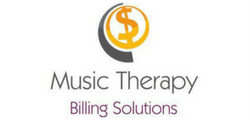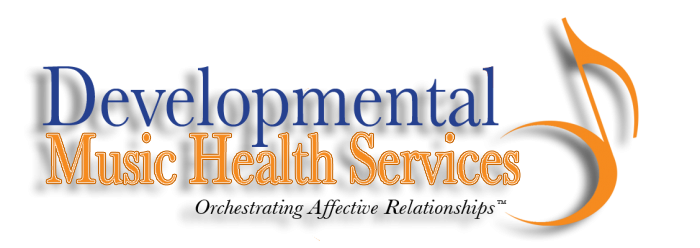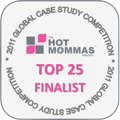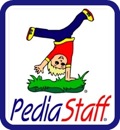One of the blessings (and curses) of my profession is that music therapy has extensive applications. As I wrote earlier, music therapists work with many different clinical populations in a wide variety of settings. We also consistently do a lot of educating and presenting as most people do not really know what music therapy entails. Trying to help others understand music therapy in a concise, relevant way can be a challenge.
A music therapist friend of mine contacted me on Facebook recently with a question. Rebecca wrote:
“I was asked to give a talk about MT (music therapy) at a natural health food store next month. The audience is pretty diverse – people from the community, mostly retired folks but sometimes SAH (stay at home) moms too. Since I will most likely have a big range of people, I am looking for an activity/intervention idea that would be appropriate to demonstrate. I thought that you may have given talks like this before and may have a suggestion or two of something that has worked for you for a broad audience. If you do, I would appreciate hearing it. Thanks!”
This is a great question – so great, in fact, that I felt it warranted an entire post (thank you, Rebecca!). So, here are my thoughts regarding what a music therapist should consider when presenting on the topic of music therapy:
- Work from the Need. Whenever I give a talk, I always try to prepare my presentation based on the need(s) of the group. What do the attendees want (or need) to know? Your primary focus will depend on your answer to this question. Additionally, does your audience have a clinical specialization? If so, make sure to concentrate on the benefits that particular clinical population receives from music therapy. In this instance, Rebecca’s talk will be more a general “what is music therapy” talk, though she may try to highlight several diverse ways music therapy can be applied.
- Who, What, When, and Where. Keep the logistics in mind. Will you be talking to a group of people in a formal, sit-down, 30-minute session? A 15-minute session? Or will it be a more informal talk, with people be coming and going? This information will affect every aspect of your talk: how you structure your presentation, what you include in your talk, what are the best experiences to plan (see below), and other preparations. It is important to get as many details as you can so that you can best prepare the most relevant presentation for that particular audience.
- Remember the Feeling. The Chinese proverb says “Tell me and I’ll forget; show me and I may remember; involve me and I’ll understand.” Always, always, always include an experiential component in your presentation. If your audience can feel what it is like to be a part of a music experience, they will have a better understanding of the essence of music therapy. My two favorites types of experiences are: 1) a lyric analysis exercise and 2) a percussion or drumming exercise (such as a drum circle). Generally speaking, I use the former when trying to demonstrate how music can be used when working on emotional, memory, social, and medical (e.g. pain and anxiety reduction) goals. Some of my favorite songs to use are What a Wonderful World (Louis Armstrong), Somewhere Over the Rainbow (from “The Wizard of Oz”), and I Will Remember You (Sarah MacLachlan). I prefer to use a drumming or percussion experience when demonstrating the use of music therapy with children and when highlighting the benefits of music therapy in addressing social, speech and communication, auditory perception and sensory integration, sensorimotor, and executive functioning goals. These are general guidelines I use; you may have your own preferences.
- Show Me the Money…I Mean Evidence. The big buzzword in healthcare is “Evidence-Based Practice” (EBP). EBP means you apply the most effective treatment possible based on 1) your individual clinical expertise and 2) the best available clinical research in your field. People paying for a product or service (insurance companies and individuals alike) want to know that what they are paying for works. I approach EBP two ways: 1) I always try to include a bibliography section in my marketing materials (see below). There is research that supports the efficacy of music therapy with many different populations, so include it! Yes, it means you need to do a little digging and reading, but it is important as a clinician to understand which interventions work and why. 2) When I start working with a client, I always, always document. For my company, Neurosong Music Therapy Services, Inc, this can get tricky because we work with so many different clinical agencies. As a result, we tailor each of our documentation systems to best meet each agency’s needs. What we document in a hospital setting is different than what we document for a treatment center which is different than how we document for our private clients. Makes it tricky training new therapists, but I strongly feel it the best way to practice.
- Everyone Leaves with Something. This does not mean everyone leaves with a prize, but you should have informational materials (e.g. marketing pieces) handy for your audience members. At the very least, have business cards available to hand out. Ideally, you would have a brochure or postcard available that describes and defines music therapy (and includes your contact information!). Not everyone will take one home, and fewer will use them, but it is smart business practice and an important part of the education process.
Music therapists sometimes get annoyed that we so often have to answer the question “what is music therapy.” But it is a reality for our profession. So embrace it and use these as opportunities to meet and connect with people. Hopefully these tips and suggestions has given you some ideas for your next talk. If you have other ideas of suggestions, please share them here!


 orcid.org/0000-0001-8665-1493
orcid.org/0000-0001-8665-1493






{ 0 comments… add one now }
You must log in to post a comment.
{ 4 trackbacks }